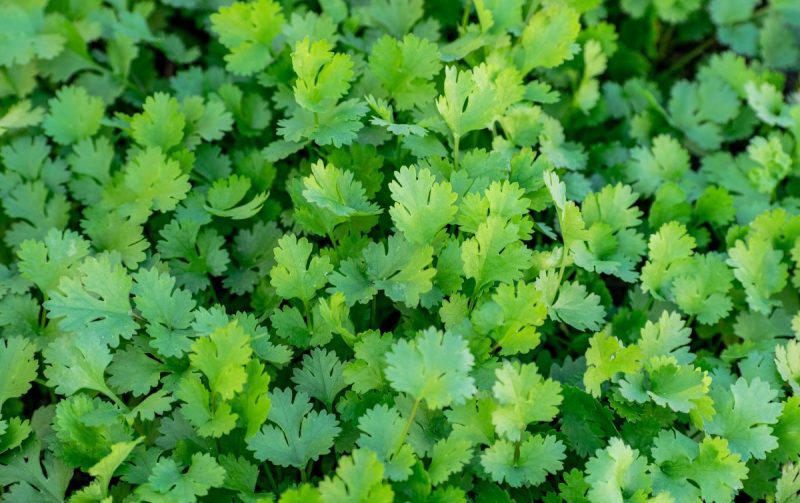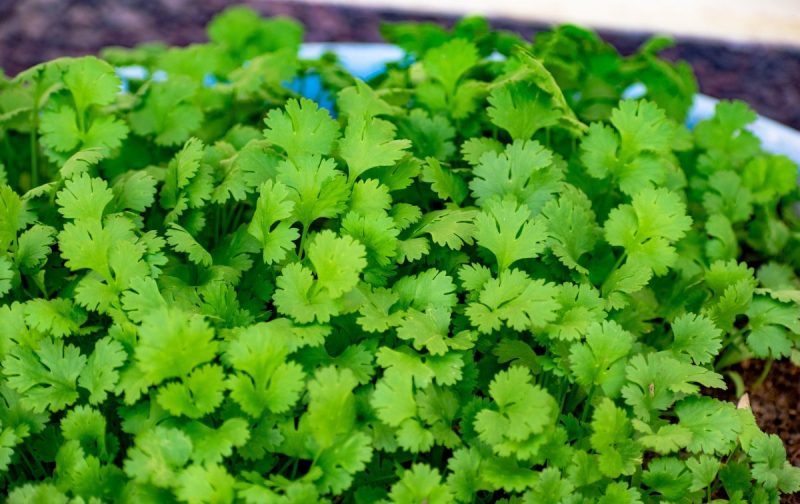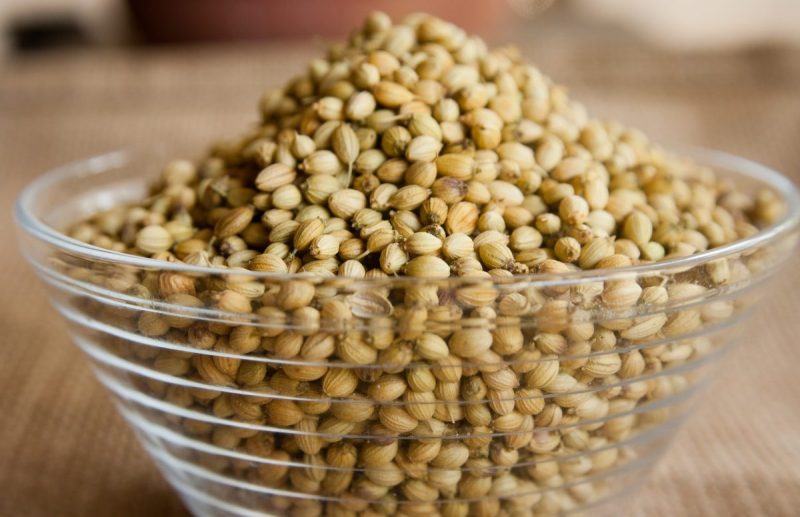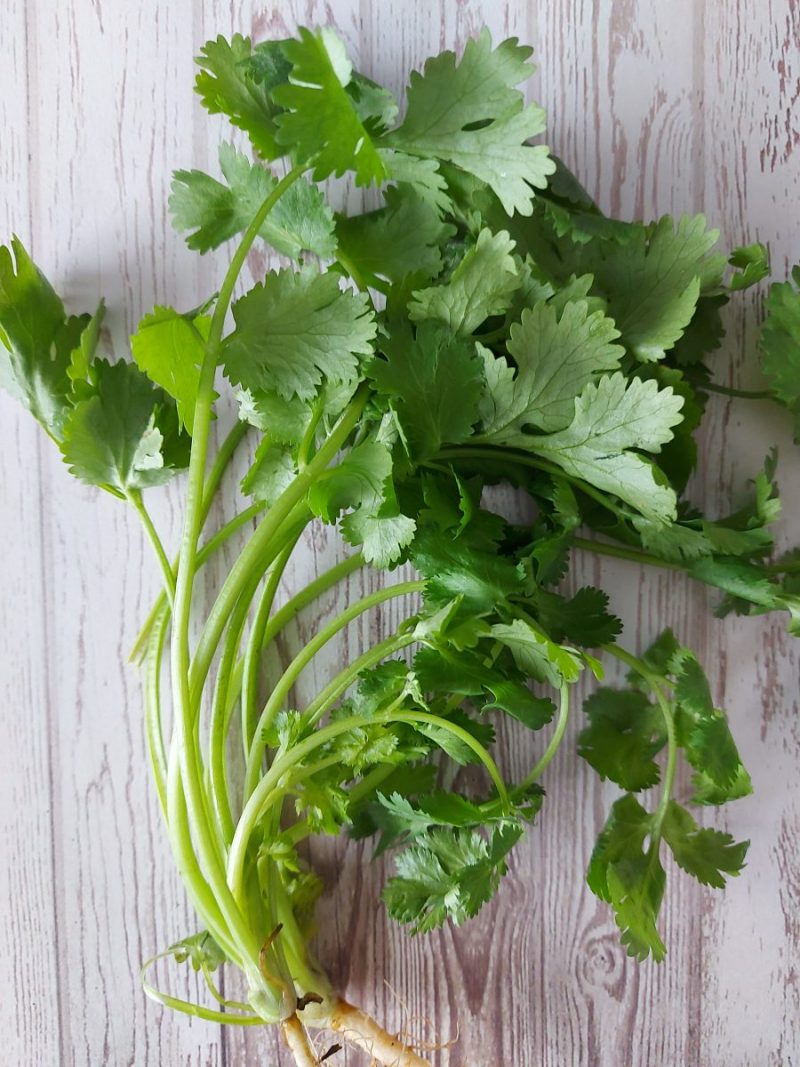Coriander – planting, growing and harvesting

Coriander (Coriandrum sativum) is an annual plant of the Umbelliferae family, which grows best in spring and autumn when temperatures are lower. It is thought to have originated in Iran and later spread to many countries in Asia and Europe.
Use
Coriander is grown especially for its fragrant leaves and seeds, being used as a spice. The seeds are used in flavoring food, beverages, tins, but also in cosmetics and medicine. The leaves are used fresh or dried to flavor dishes.
Botanical characteristics
Coriander plants can reach up to one meter in height in the flowering phenophase, forming a pivot root. The basal leaves are similar to those of parsley and those located on the flower stalk are pinnate, with lobes with large incisions. The flowers are white-pink and the seeds are spherical, colored in yellow.



Environmental requirements
Coriander prefers poorer, looser, well-drained soils, being sensitive to excessive moisture in the soil. It is a light-loving plant but not of high temperatures, the optimal interval for growth being 20-23℃. It has moderate humidity requirements, requiring irrigation during dry periods. Seed germination is achieved at 4-6℃.
Cultivation
The crop is established by direct sowing, in late autumn or early spring, in rows spaced 30 cm apart, with 10-15 cm between plants, on a row. Fertilizers can be administered when getting ready the land.
In order to have fresh leaves for a longer time, sowing can be done in stages.
Coriander can also be grown as a potted plant in a well-drained substrate.
Recommended products
-
You can find products on a different store
Change Store -
You can find products on a different store
Change Store -
You can find products on a different store
Change Store -
You can find products on a different store
Change Store -
You can find products on a different store
Change Store -
You can find products on a different store
Change Store -
You can find products on a different store
Change Store -
You can find products on a different store
Change Store -
You can find products on a different store
Change Store -
You can find products on a different store
Change Store -
You can find products on a different store
Change Store -
You can find products on a different store
Change Store -
You can find products on a different store
Change Store -
You can find products on a different store
Change Store -
You can find products on a different store
Change Store -
You can find products on a different store
Change Store -
You can find products on a different store
Change Store -
You can find products on a different store
Change Store -
You can find products on a different store
Change Store -
You can find products on a different store
Change Store -
You can find products on a different store
Change Store -
You can find products on a different store
Change Store -
You can find products on a different store
Change Store -
You can find products on a different store
Change Store
Care
The care works refer to weed control, thinning the plants, and irrigation. For water management, sprinkler or drip systems can be installed.
In the case of plants grown in flowerpots or in the garden, to ensure their nutrient requirements, a specially formulated fertilizer can be administered regularly.
Recommended products
-
You can find products on a different store
Change Store -
You can find products on a different store
Change Store -
You can find products on a different store
Change Store -
You can find products on a different store
Change Store -
You can find products on a different store
Change Store -
You can find products on a different store
Change Store -
You can find products on a different store
Change Store -
You can find products on a different store
Change Store -
You can find products on a different store
Change Store -
You can find products on a different store
Change Store -
You can find products on a different store
Change Store -
You can find products on a different store
Change Store -
You can find products on a different store
Change Store -
You can find products on a different store
Change Store -
You can find products on a different store
Change Store -
You can find products on a different store
Change Store -
You can find products on a different store
Change Store -
You can find products on a different store
Change Store -
You can find products on a different store
Change Store -
You can find products on a different store
Change Store -
You can find products on a different store
Change Store -
You can find products on a different store
Change Store -
You can find products on a different store
Change Store -
You can find products on a different store
Change Store
Harvesting and storage
The leaves can be harvested after about 4-5 weeks from sowing and it takes more than 100 days to harvest the seeds. They can be gathered after they have dried and are brown in color. The leaves can be stored in the refrigerator for a short time or can be dried for later use, stored in containers protected from moisture. In the case of seeds, they have to be harvested with a portion of the stem and dried in paper bags or textile bags, and after drying the seeds must be stored in dry places.
Diseases and pests
Coriander can be attacked by diseases that cause spots on the leaves, or powdery mildew. It is recommended to sow the plants at appropriate distances, so as to ensure good ventilation and to avoid excessive moisture.
Among pests, aphids, nematodes, and caterpillars can affect the proper development of plants.
Recommended products
-
You can find products on a different store
Change Store -
You can find products on a different store
Change Store -
You can find products on a different store
Change Store -
You can find products on a different store
Change Store -
You can find products on a different store
Change Store -
You can find products on a different store
Change Store -
You can find products on a different store
Change Store -
You can find products on a different store
Change Store -
You can find products on a different store
Change Store -
You can find products on a different store
Change Store -
You can find products on a different store
Change Store -
You can find products on a different store
Change Store -
You can find products on a different store
Change Store -
You can find products on a different store
Change Store -
You can find products on a different store
Change Store -
You can find products on a different store
Change Store -
You can find products on a different store
Change Store -
You can find products on a different store
Change Store -
You can find products on a different store
Change Store -
You can find products on a different store
Change Store -
You can find products on a different store
Change Store -
You can find products on a different store
Change Store -
You can find products on a different store
Change Store -
You can find products on a different store
Change Store















































































































































































































































































































































































































































